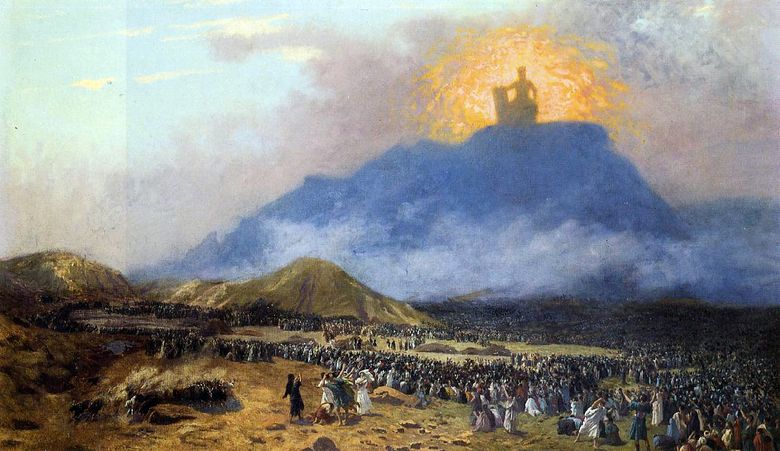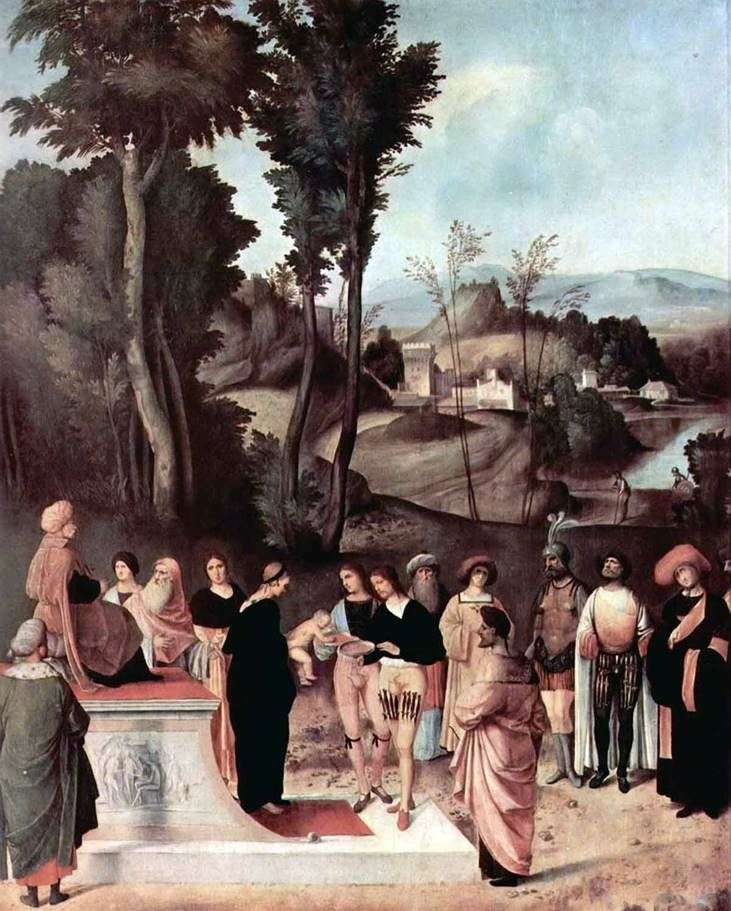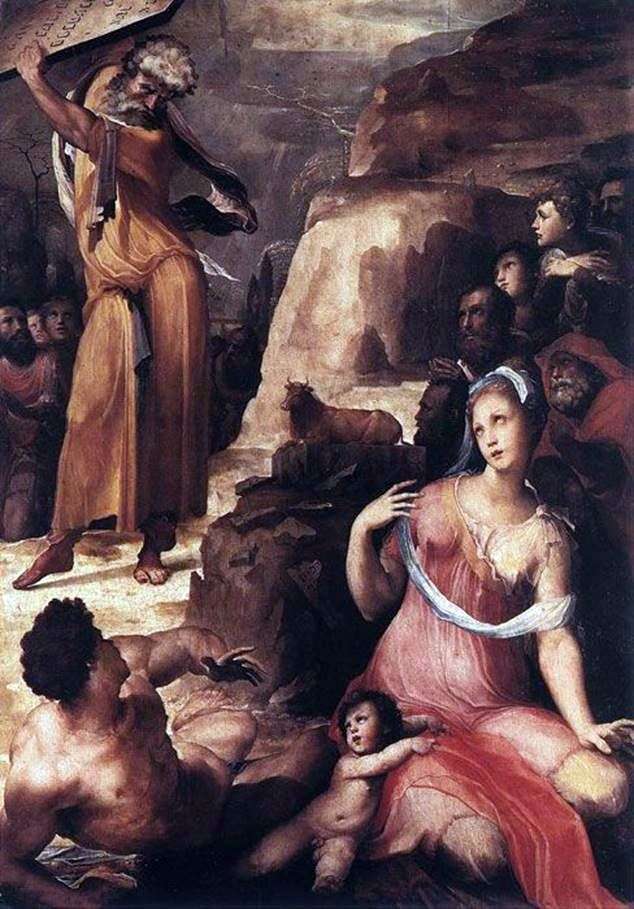
The Frenchman, the artist and the brilliant representative of academicism – Jean-Leon Gerome, – left behind a large collection of works. His creative impulse wandered in search of a certain style and genre along with the author. Numerous trips to Africa, in particular the Egyptian deserts and the East, have found a bright imprint of the theme of Jerome.
Among the paintings of the artist are those that belong to salon works, a portrait, genre painting with ossified academism. “Moses on Mount Sinai” critics have designated a picture of the late period of creativity of Jerome. It reflects the artist’s inner world and piety, the worship of holy scripture and religious awe.
One of the most significant events in the Christian religion is the appearance of God to Moses on Mount Sinai, or Horeb, for the transmission of the Ten Commandments on the fiftieth day after the exodus from the Egyptian lands. The event is seen by the author in rather gloomy colors and inspires a sad mood in the viewer, akin to what the exhausted people visited.
The artist described the great outcome as a huge accumulation of people, finely drawn, literally by bit. Wailing and stretched hands of pilgrims personify the thirst for flesh and the torment of the soul of those who believed in Jesus. And here it is – the phenomenon of the creator! It is not visible, only a silhouette against the background of a golden glow. The greatness of God Jerome conveyed at the expense of his deliberately large appearance and an ant an Egyptian band at the foot of Sinai. Thanks to the dark color of the first plan, the celestial vault and the bright yellow patch surrounding the Creator favorably “pull” the distant plan out of the darkness of the colors.
The purple mountain is knocked out of a common warm palette, like an alien body. Critics often scolded Jean-Leon in the fragmentation of the works, the picture of which, like a mosaic, fell to pieces, not creating the integrity of the drawing and color. “Moses on Mount Sinai” is an excellent confirmation of this, with the presence of two absolutely different parts – warm and cold. Moreover, the sky with the silhouette of the mountain and the plain live by themselves, this is evidenced by a different technique of writing – a clear scrupulous work on the small details of the desert, including sand and earth, and a diffuse transparent background with the “glued” silhouette of God.
The canvas is interesting in its essence and composition, albeit with obvious violations of integrity. It tells of an event that turned the old way of the whole Christian people, a quiet life, morals and values. Jerome reflected here his own vision of events, perhaps fictitious by someone very long ago, but vividly perceived by believers. The painting plays many roles in the historical sense – as an illustration to biblical legends, and a sample of academic painting of the artist of the past centuries, and of course, the canvas has no price, as a material object, except part of the reproductions based on the plot of the great Jean-Leon Jerome.
 Moïse sur le mont Sinaï – Jean-Leon Jerome
Moïse sur le mont Sinaï – Jean-Leon Jerome Moisés en el monte Sinaí – Jean-Leon Jerome
Moisés en el monte Sinaí – Jean-Leon Jerome Mount Sinai by El Greco
Mount Sinai by El Greco Auction slaves by Jean Leon Jerome
Auction slaves by Jean Leon Jerome The Test of Moses by Fire by Giorgione
The Test of Moses by Fire by Giorgione Moses and the golden calf by Domenico Bekafyumi
Moses and the golden calf by Domenico Bekafyumi Cruising Dervishes by Jean Leon Jerome
Cruising Dervishes by Jean Leon Jerome Turkish girl and Mauritanian bath by Jean Leon Jerome
Turkish girl and Mauritanian bath by Jean Leon Jerome